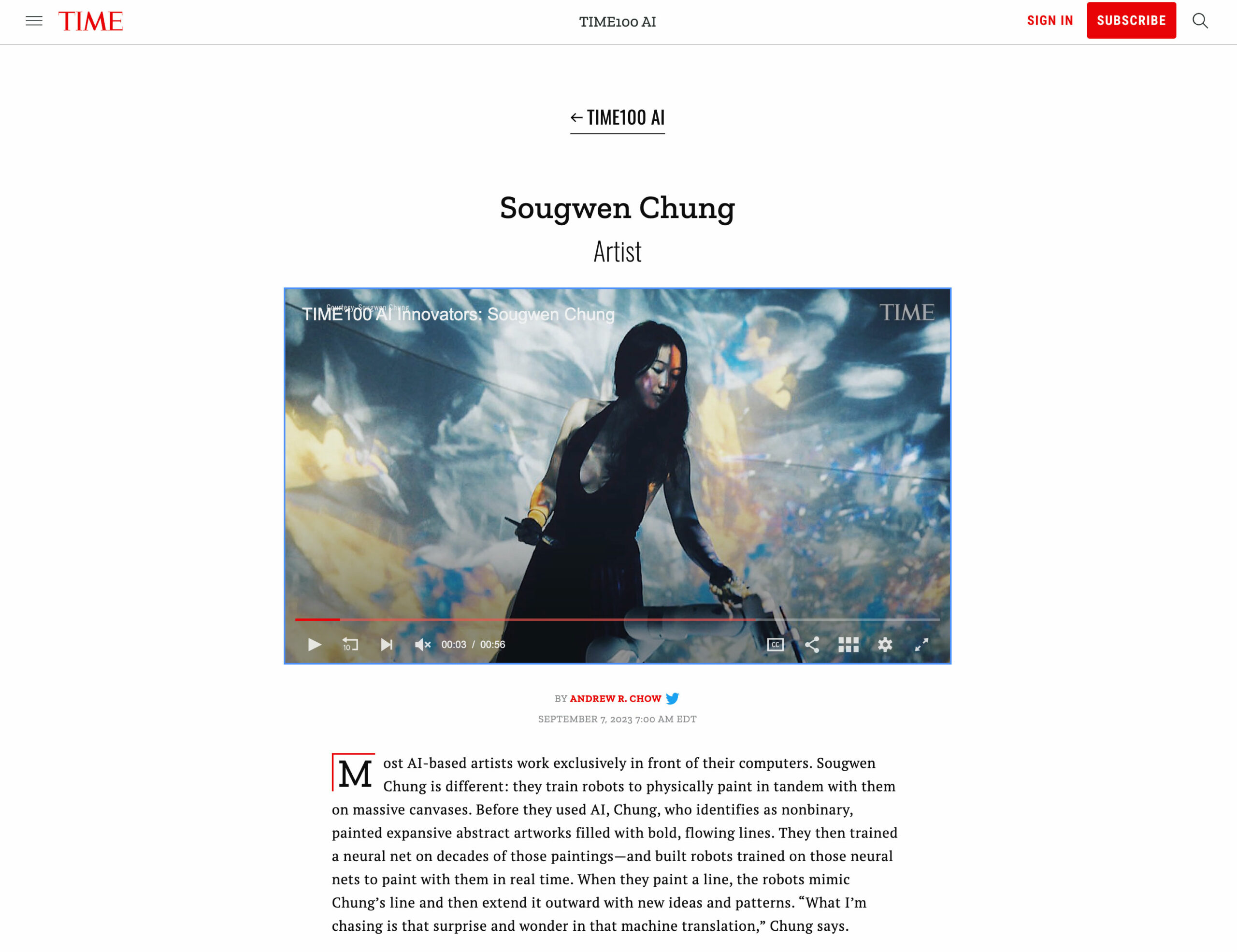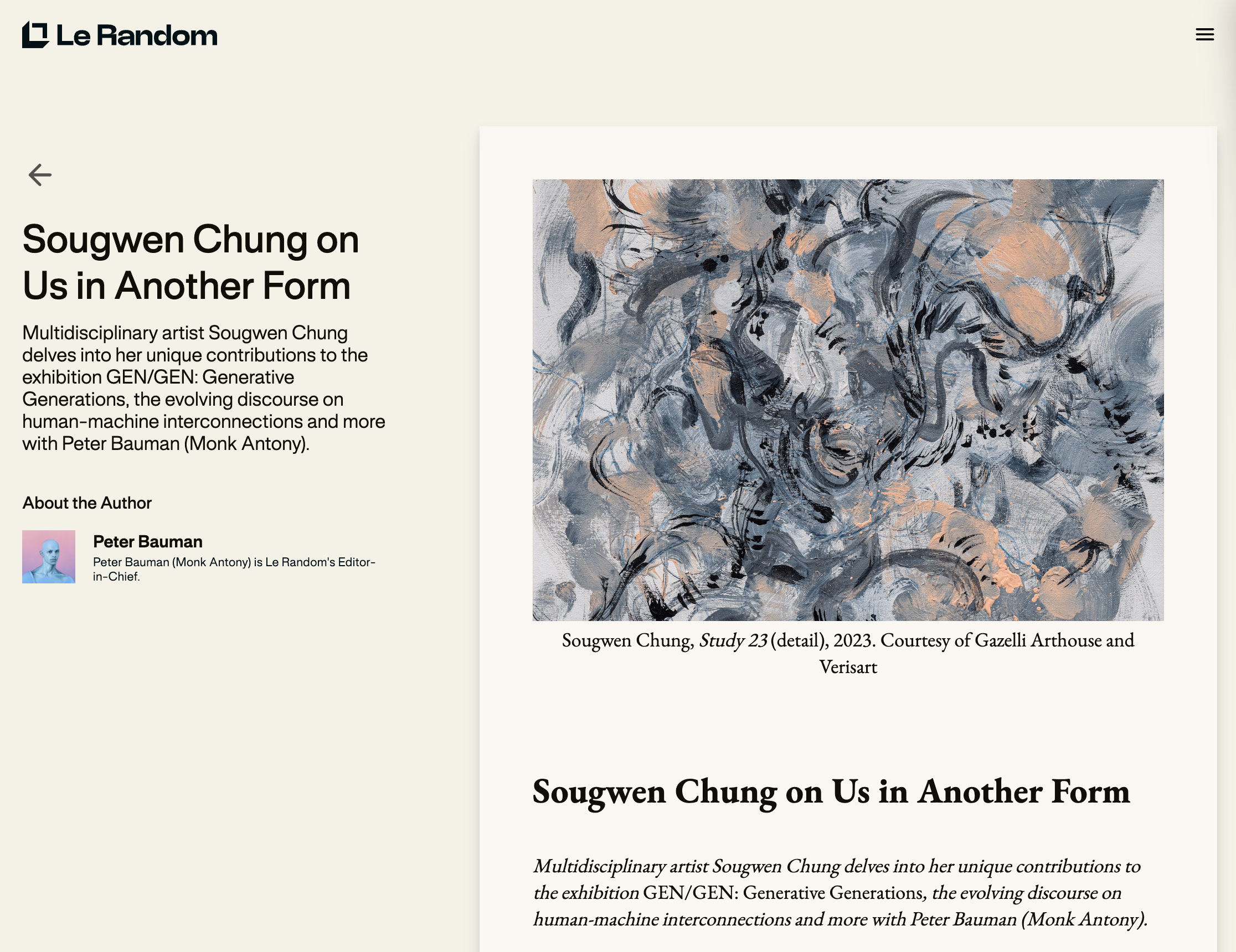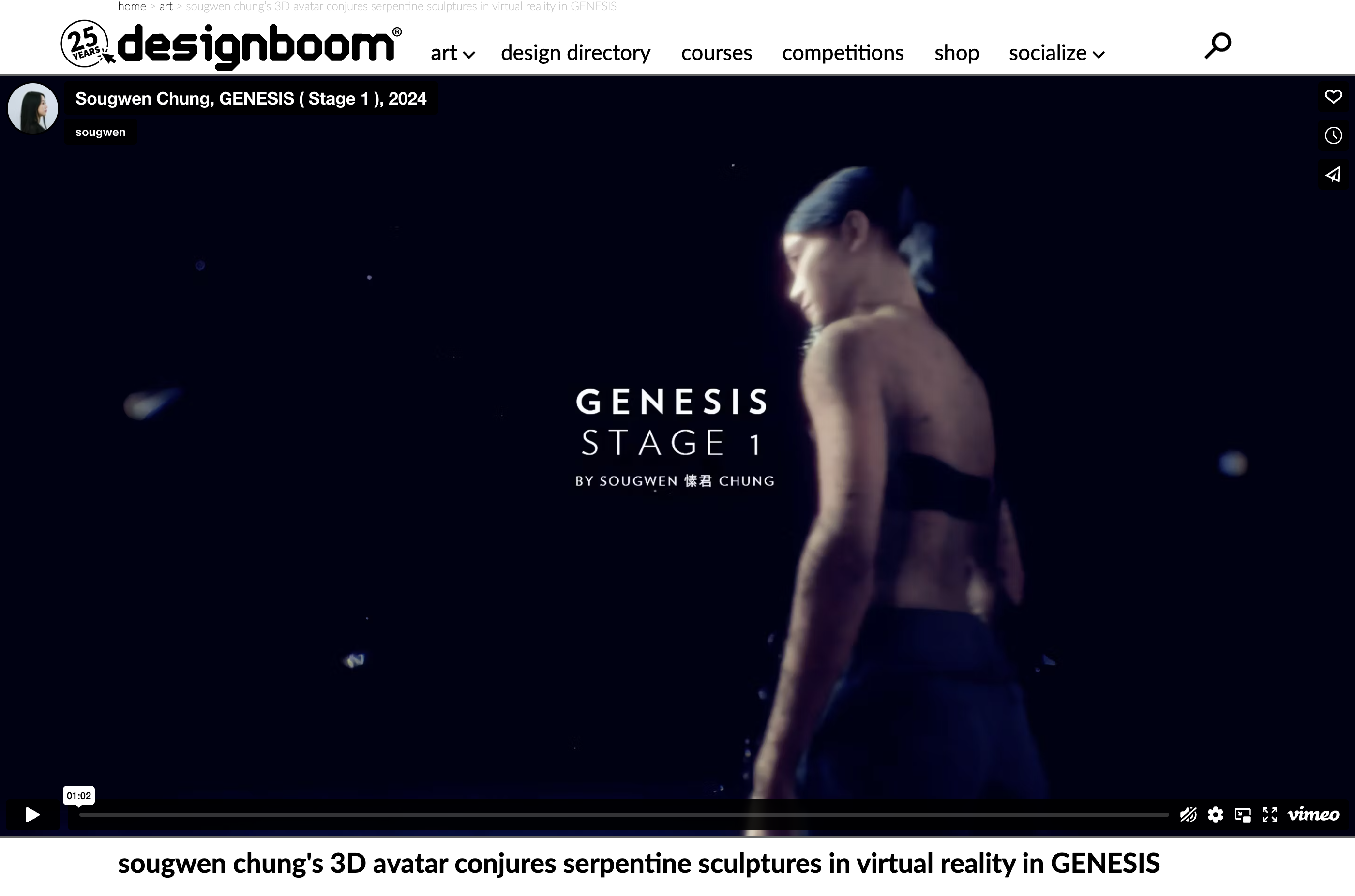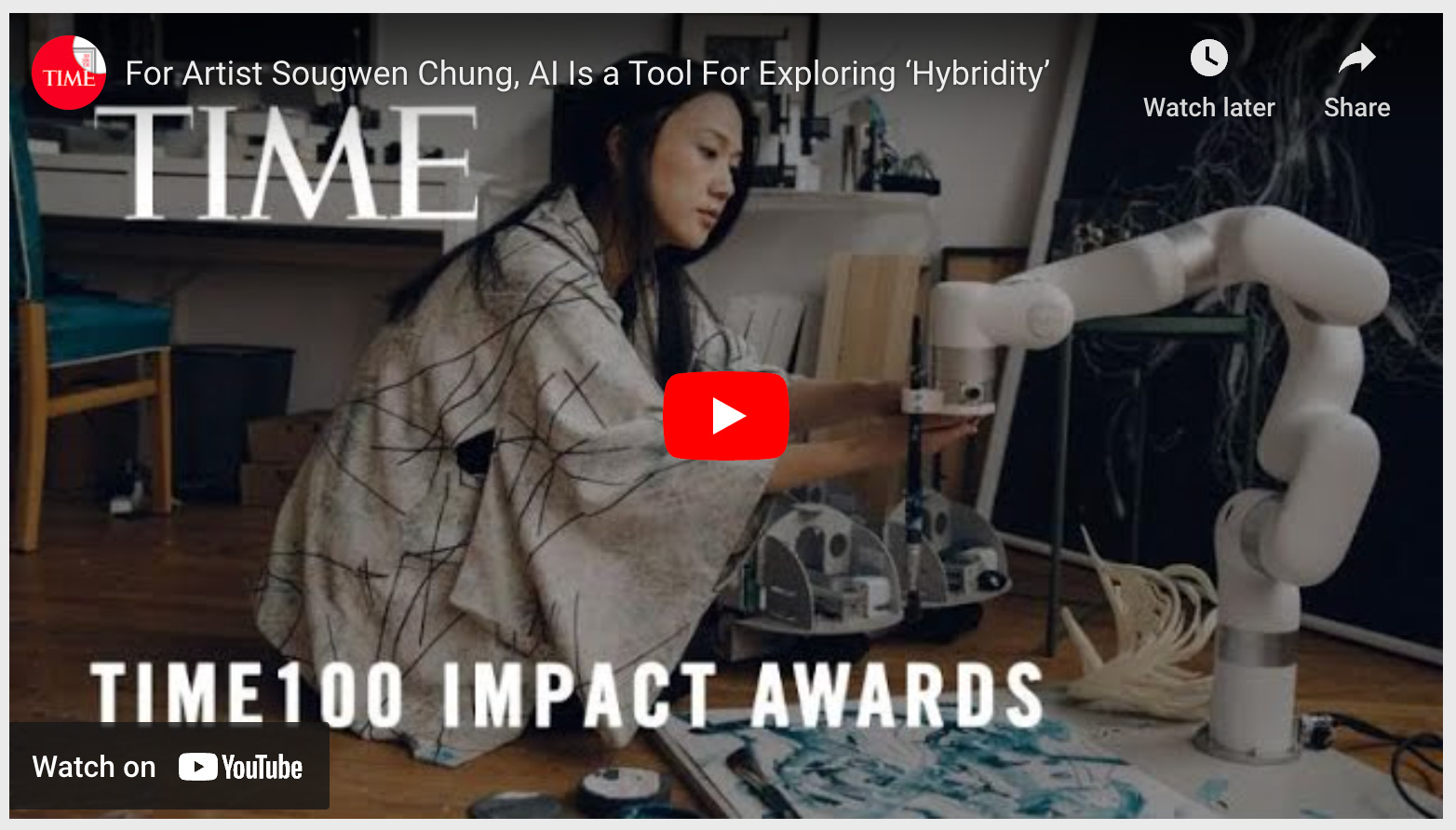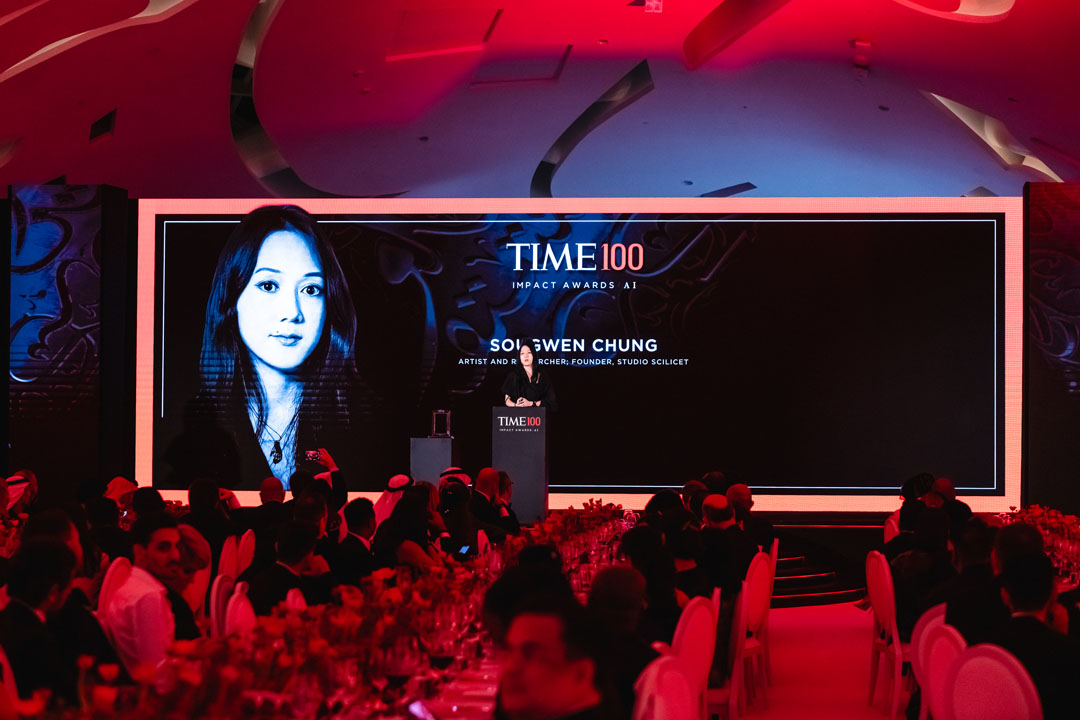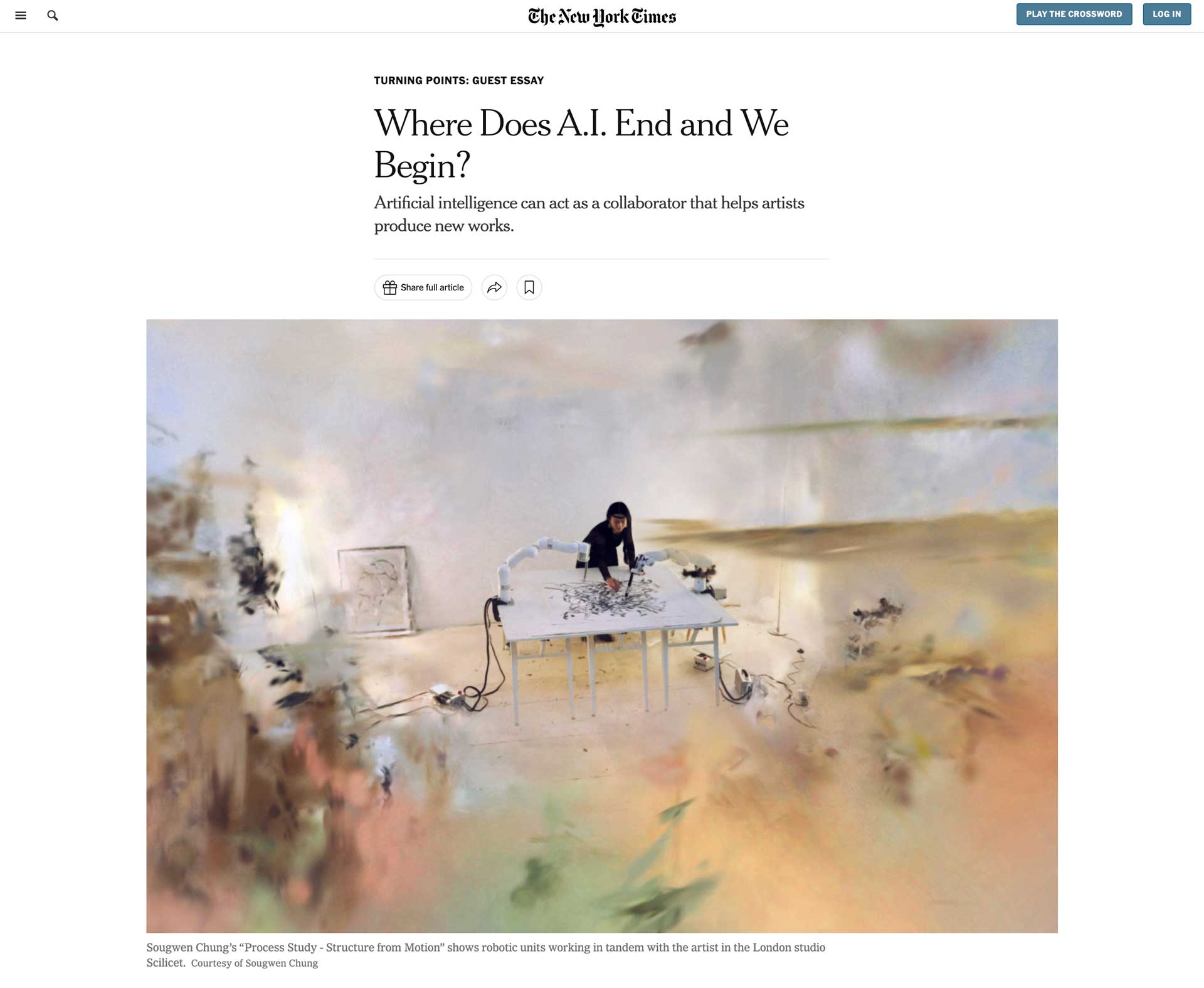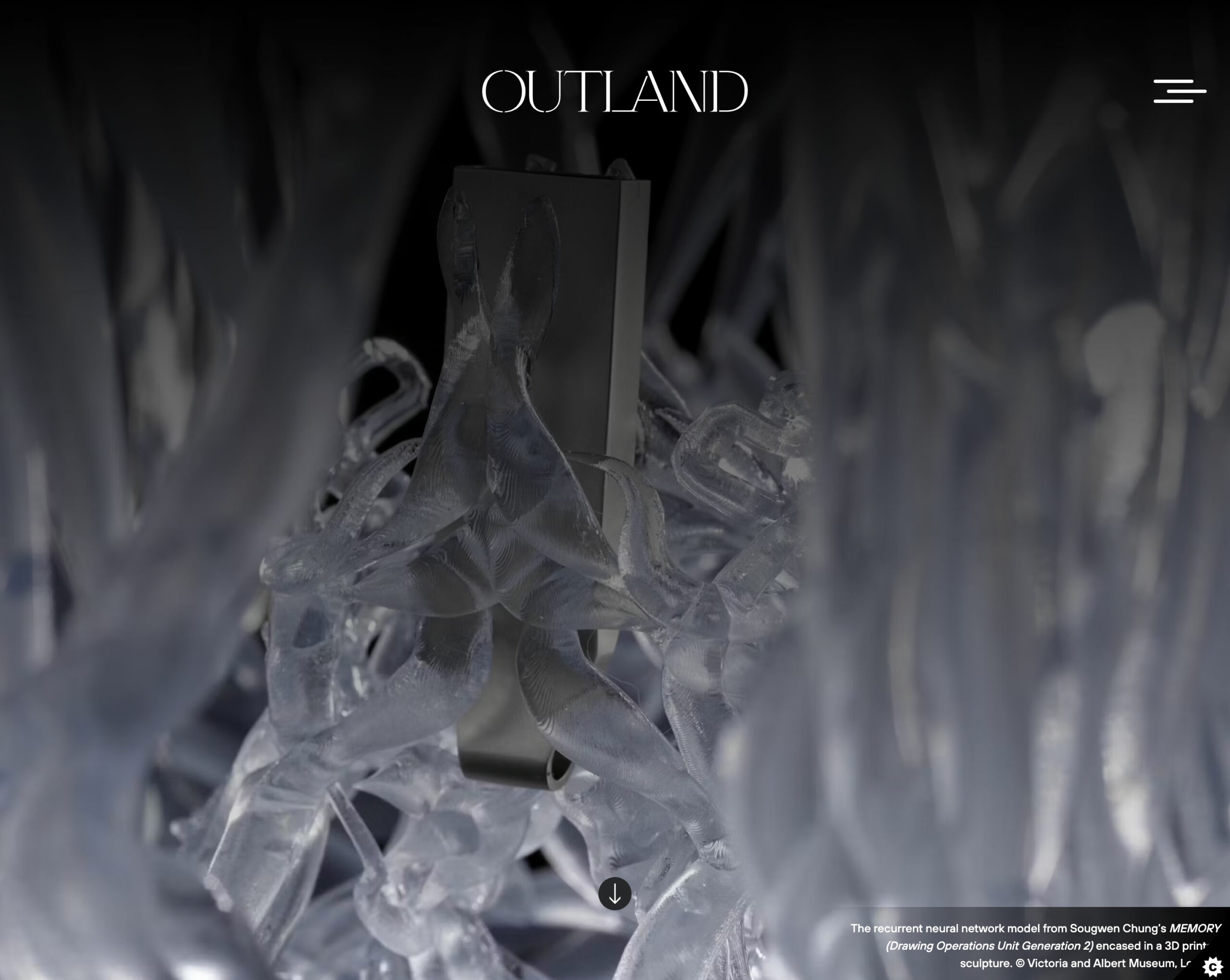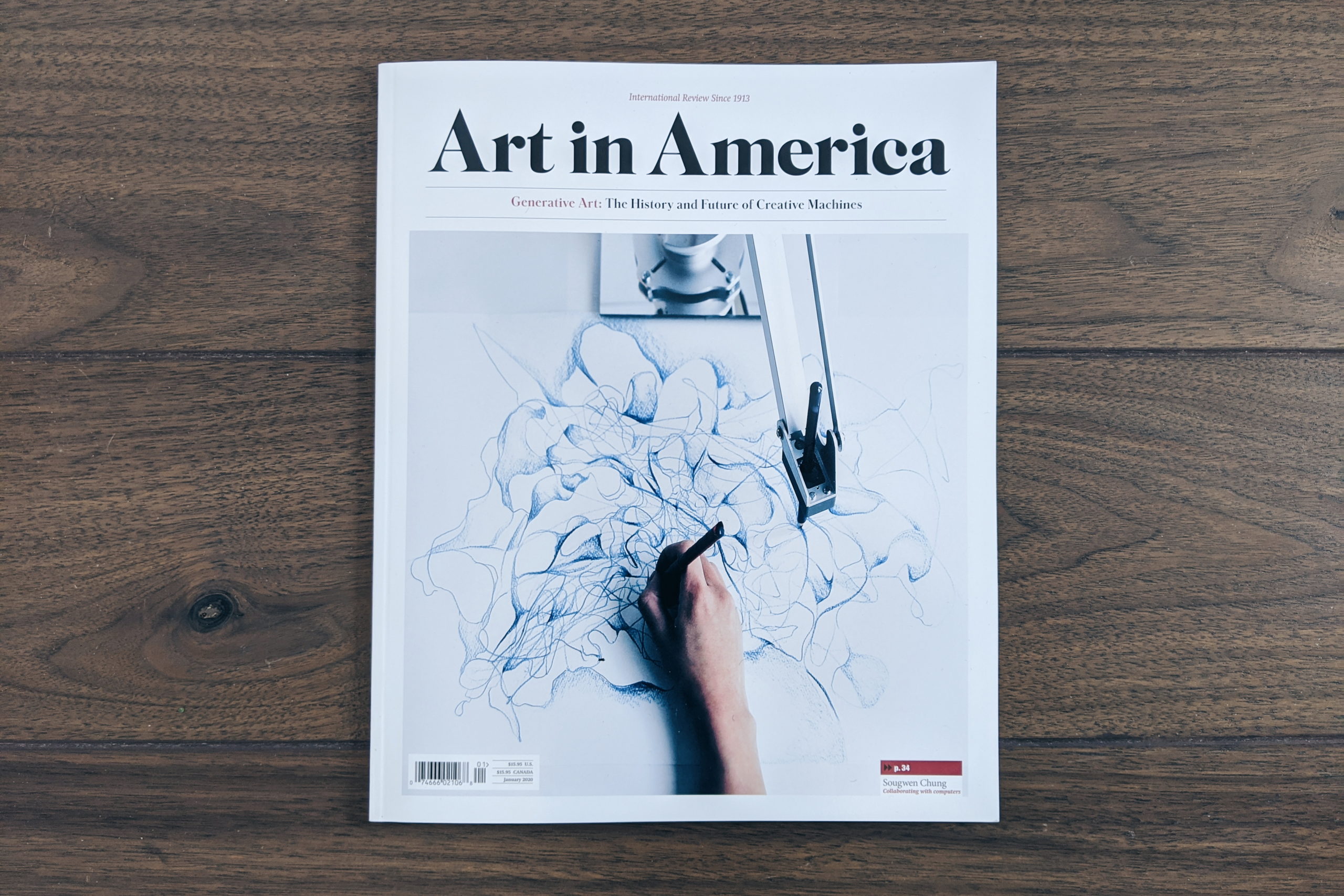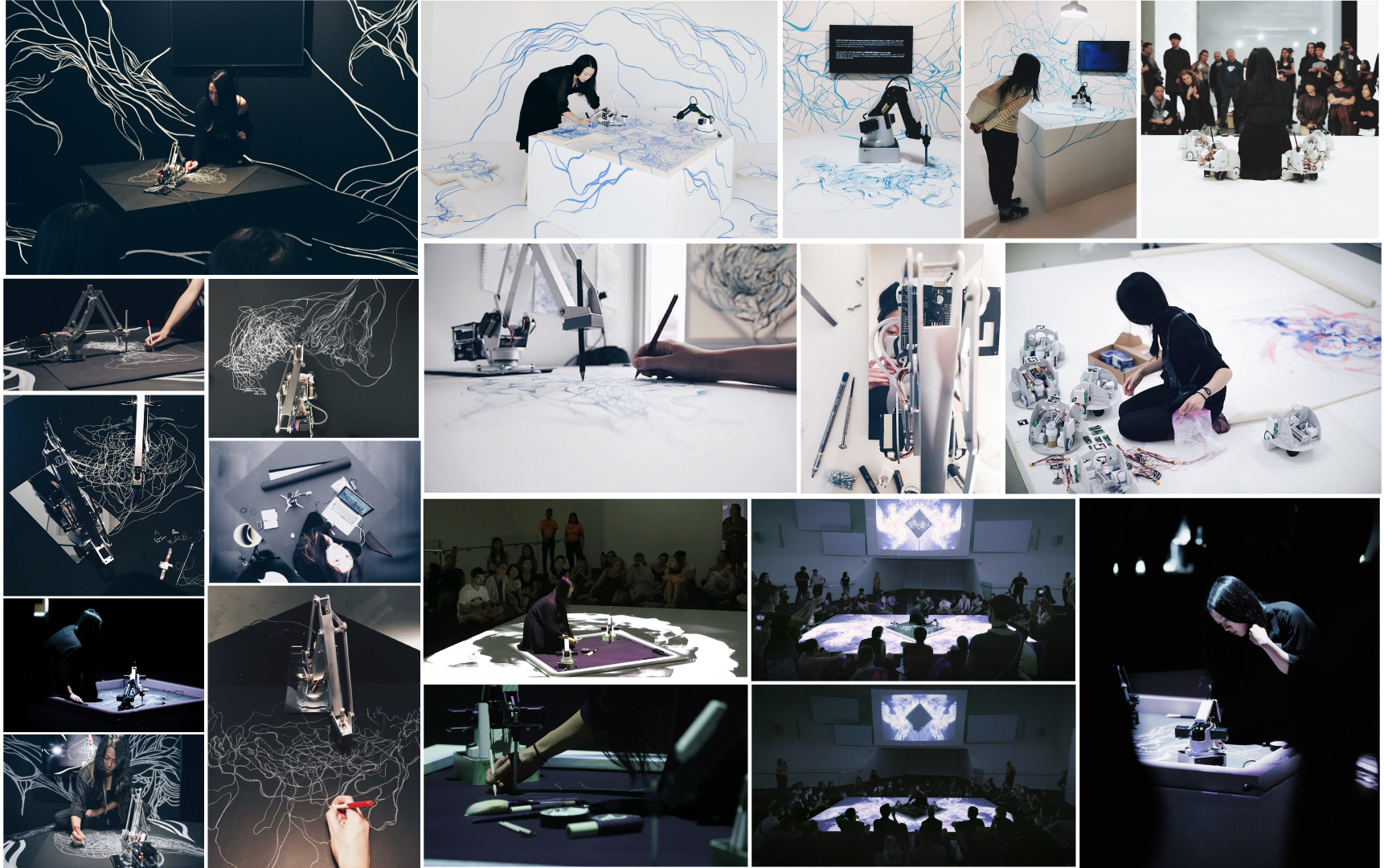Latest in: selected
Most AI-based artists work exclusively in front of their computers. Sougwen Chung is different: they train robots to physically paint in tandem with them on massive canvases. Before they used AI, Chung, who identifies …
Multidisciplinary artist Sougwen Chung delves into her unique contributions to the exhibition GEN/GEN: Generative Generations, the evolving discourse on human-machine interconnections and more with Peter Bauman (Monk Antony). link
“My work, at its simplest level, is about exploring the contradictions that stem from not fitting neatly into one category,” Sougwen Chung, who identifies as nonbinary, said on Sunday in Dubai, where they accepted …
💙 Grateful to the whole team at @TIME for the #TIME100 Impact Award, recognizing individuals who have gone above and beyond to move their industries—and the world—forward in the AI space. I am honored to be one of …
Chung, Sougwen. “Where Does A.I. End and We Begin?” The New York Times, The New York Times, 7 Dec. 2023, www.nytimes.com/2023/12/07/special-series/artificial-intelligence-art.html?unlocked_article_code=1.EE0.eiMW.j35PQKm8GJih&smid=url-share. Where does A.I. end and we begin? I’ve been thinking about this question …
In an in-depth article and interview with the V&A Museum's digital art curator Pita Arreola, the topic of collecting contemporary digital art is discussed, with the recent acquisition of Sougwen Chung's work MEMORY, serving …
Thank you to Art In America magazine and Jason Bailey for featuring my drawing on their January issue, focusing on Generative Art. This represents a milestone in the industry of Art and Technology, and …
Deeply grateful to @Lumen_prize, for awarding the Art and Technology Prize to Drawing Operations, a project I started in 2015 exploring human and machine collaboration. Thank you Carla Rapoport, and Jack Addis for your support and …
